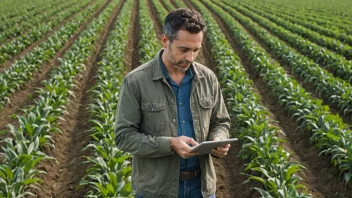As the world grapples with the complexities of poverty, the role of technology in alleviating this pressing issue has become increasingly significant. Innovations in technology hold the potential to empower marginalized communities, enhance their quality of life, and create pathways out of poverty. This article highlights some of the most impactful technological advancements that are making a difference in the fight against poverty. One of the key innovations is the proliferation of mobile technology, which has transformed communication and access to information in remote areas. Mobile phones have become a lifeline for individuals in impoverished regions, providing access to vital services such as health information, market prices, and financial services. Platforms like bKash in Bangladesh have enabled millions to send and receive money, fostering economic participation and improving financial literacy. Additionally, the integration of agricultural technology has revolutionized farming practices among subsistence farmers. With tools such as precision farming apps, farmers can make data-driven decisions that increase crop yields and reduce waste. These technologies empower farmers to access weather forecasts, market trends, and best practices, leading to enhanced food security and economic stability. Furthermore, telemedicine is reshaping healthcare access for impoverished populations. By utilizing mobile apps and online platforms, healthcare professionals can provide remote consultations, diagnosis, and treatment plans. This is particularly crucial in rural areas where healthcare facilities are limited. Telemedicine reduces travel costs and wait times, ensuring that individuals receive timely medical attention, which is essential for their well-being. The rise of social enterprises leveraging technology to address poverty is another noteworthy trend. These organizations develop innovative solutions tailored to the needs of low-income communities. For example, companies like d.light provide affordable solar lighting solutions to households without electricity. This not only improves safety and quality of life but also reduces reliance on harmful fuels. Additionally, education technology (EdTech) is bridging the gap in access to quality education. Online learning platforms are making educational resources available to learners around the world, breaking geographical barriers. Initiatives like Bridge International Academies utilize technology to deliver affordable and quality education to underserved communities, ensuring that children have the opportunity to thrive. In conclusion, technology serves as a powerful ally in the fight against poverty, offering innovative solutions that empower communities and enhance livelihoods. From mobile banking and agricultural advancements to telemedicine and educational resources, these technologies create sustainable pathways to economic stability and improved health outcomes. As we embrace these innovations, it is vital to promote their accessibility and inclusivity, ensuring that the benefits reach those who need them most. By harnessing the power of technology, we can work collaboratively towards a future where poverty is no longer an insurmountable barrier.
Innovative Tech Fighting Poverty Globally
Explore how innovative technology is transforming the fight against poverty globally, empowering marginalized communities and enhancing their quality of life.






